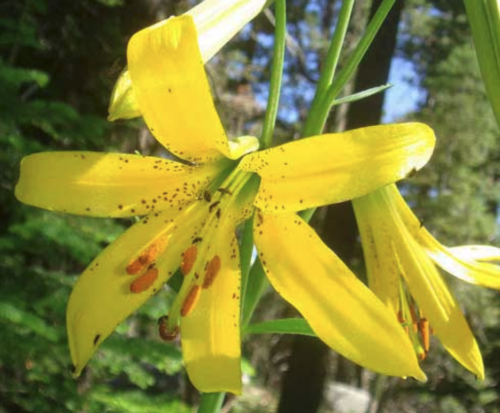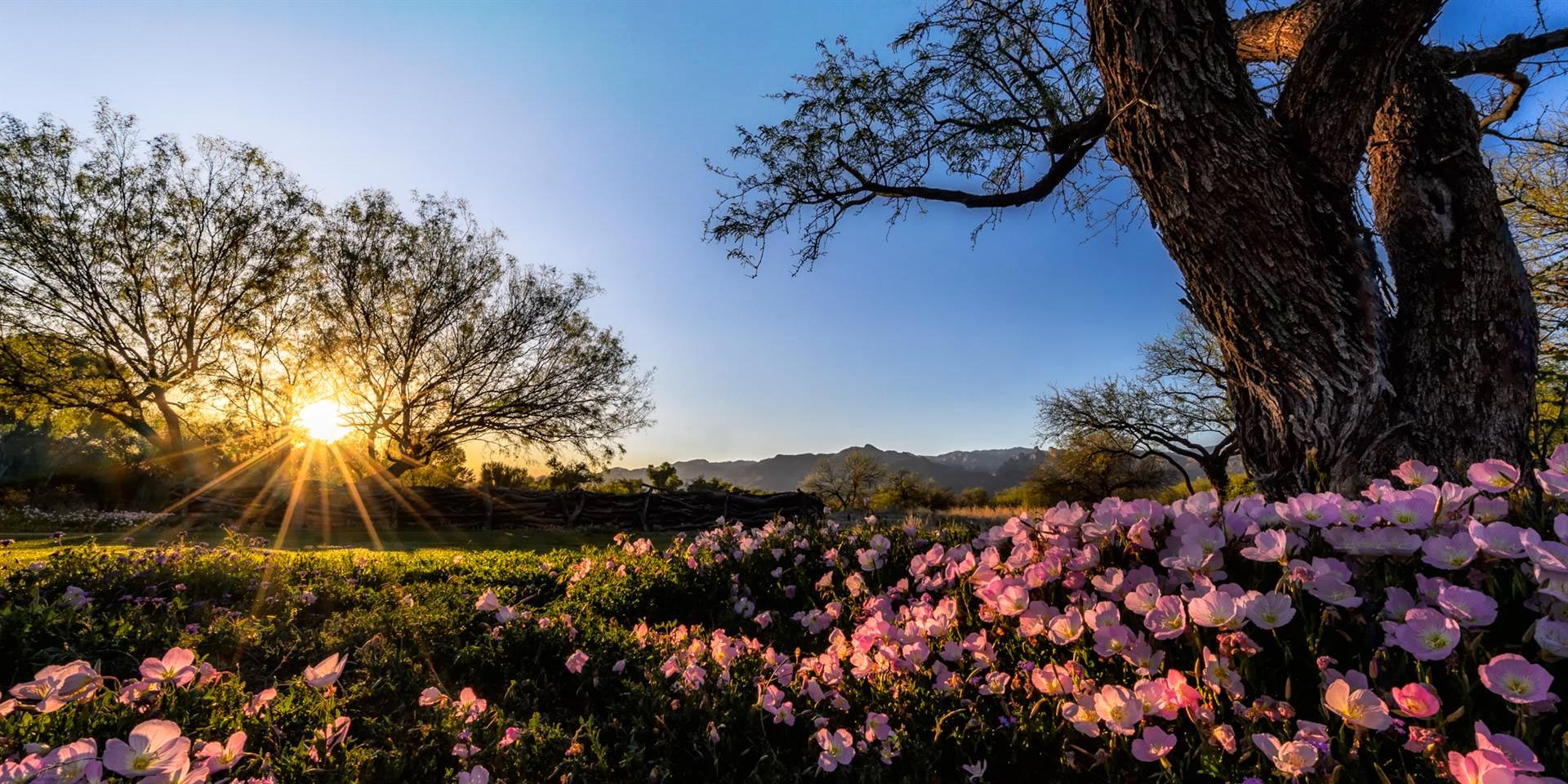SPOTLIGHT ON A NATIVE PLANT, Lemon Lily by David Stith
Posted Feb 12, 2022
This article is a reprint from the Fall 2012 issue of Plant Press.

Lemon lily (Lilium parryi) is the only true lily (the genus Lilium) native to Arizona. It is an herbaceous perennial that inhabits the mid to upper elevations of the mountain ranges of Southern California where it is uncommon and Southeastern Arizona where it is rare. It has also been found in the Sierra Los Ajos in Sonora, Mexico. It is named for Dr. Charles Christopher Parry who was among the first to collect it along with John Gill Lemmon in the San Bernardino Mountains of California in the summer of 1876. It grows primarily along shaded mountain streams but can also be found in bogs and meadows.

In Arizona the species has been reported in the Santa Rita, Huachuca, and Chiricahua Mountains. Accounts from the Chiricahuas and Santa Ritas are sporadic. The majority of the Arizona populations occur in the Huachuca Mountains in Miller, Carr, Ramsey, and Bear Canyons with the largest population occurring in Miller Canyon. In 1989 an additional population was discovered in Huachuca Canyon.
The stems can grow to a height of six feet and support as many as thirty flowers; however, many plants have only a few flowers. The leaves are mostly lanceolate to narrowly elliptic to oblanceolate. They are alternate in young plants and both alternate and whorled in mature plants. The stem originates from a rhizomatous bulb consisting of segmented scales.
The four-inch trumpet-shaped flowers are lemon yellow in color for which it gets its name. The sepals are often sparsely speckled. The flowers open just before sunset and are deliciously fragrant, attracting hawk moths such as the white-lined sphinx (Hyles lineate) and the elegant sphinx (Sphinx perelegans) as well as many other insects. In Arizona they bloom in May and June and fruit in July and August.
The fruit are composed of a three-chambered capsule which may contain one hundred seeds stacked like coins within the pod. The seeds are hydrophobic and can be carried away in the current of a stream or blown across the surface of the water. Few of the seeds will ever grow to mature plants.
Predators include gophers which feed on the bulbs, and deer and bear which consume the fruit. Boring insects may also damage the flowers and consume the seeds.
Throughout its range the lemon lily has suffered greatly from human activities. While not on the endangered species list, it is listed as a G3 (Vulnerable Species) by NatureServe and the California and Arizona Heritage Programs. Hence, wherever it is found it should be considered a sensitive species requiring monitoring and protection. It has been and remains the object of restoration efforts in both Arizona and California. Idyllwild, California hosts an annual Lemon Lily Festival.

